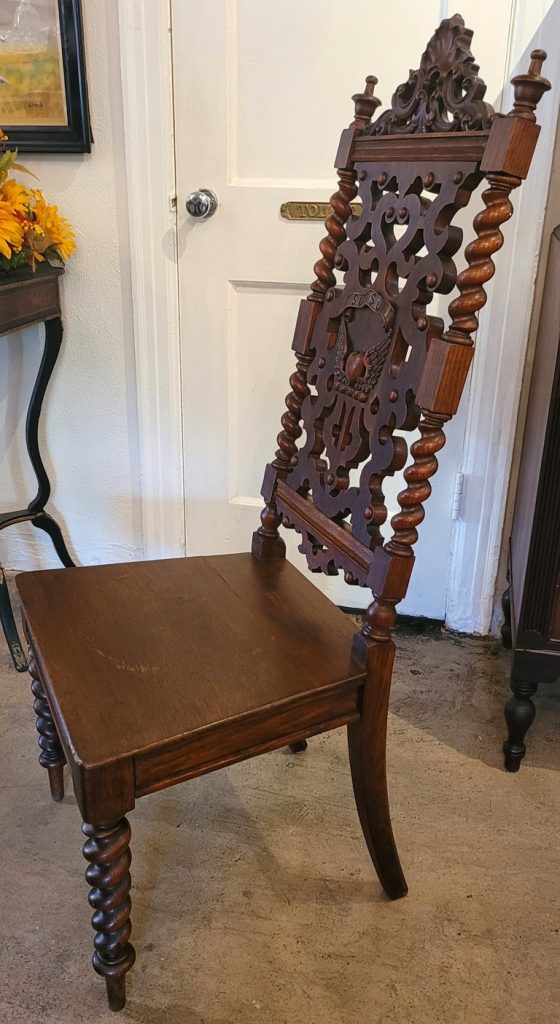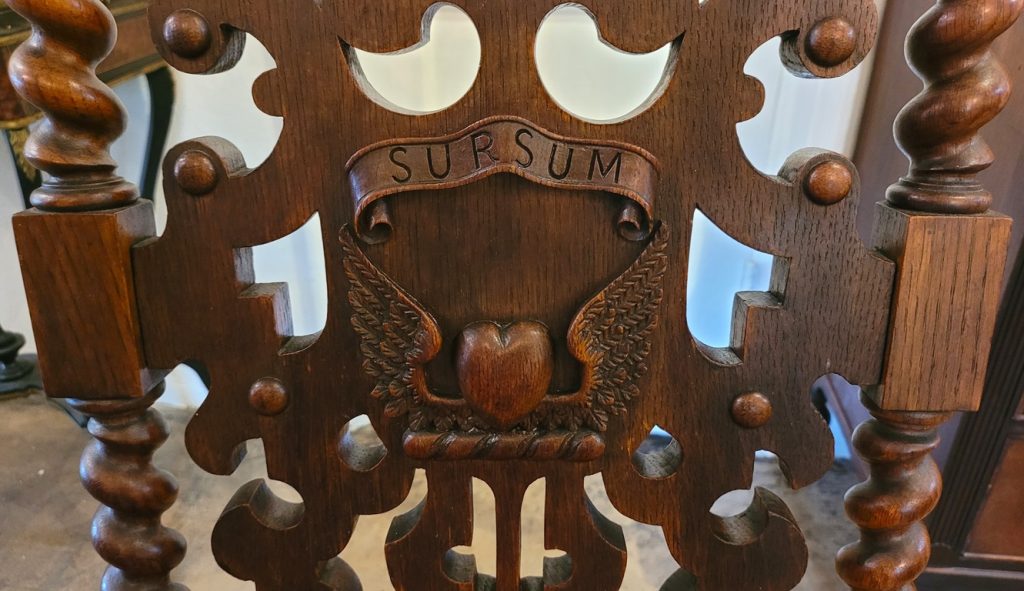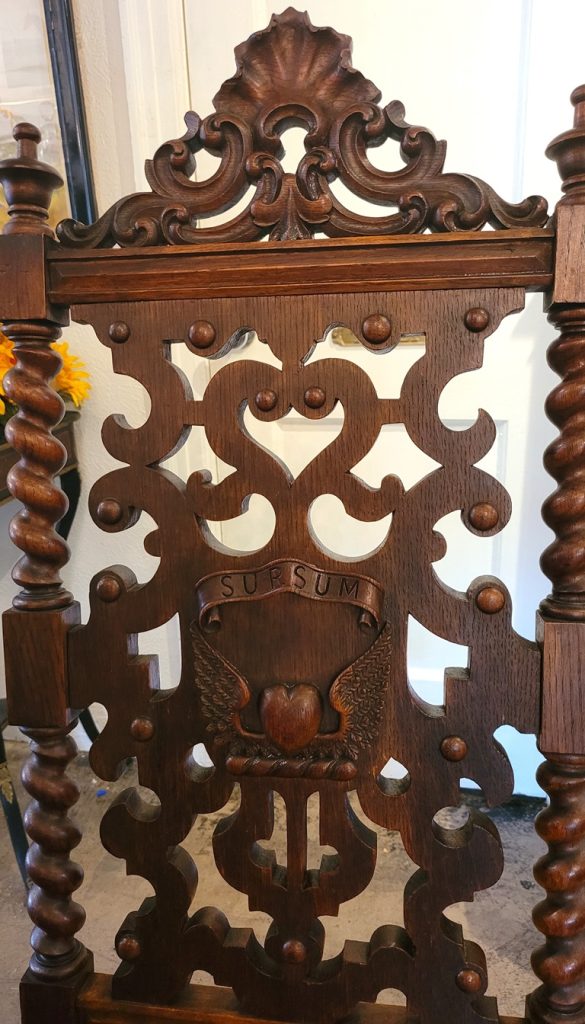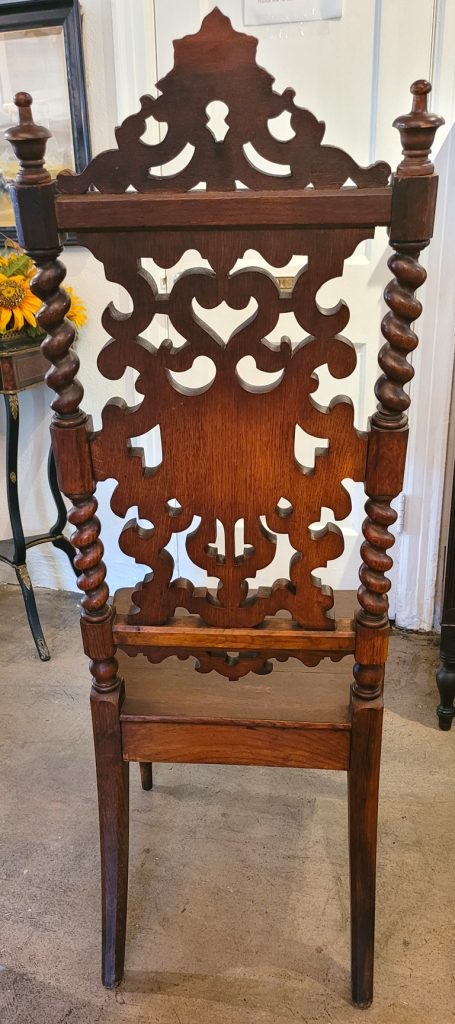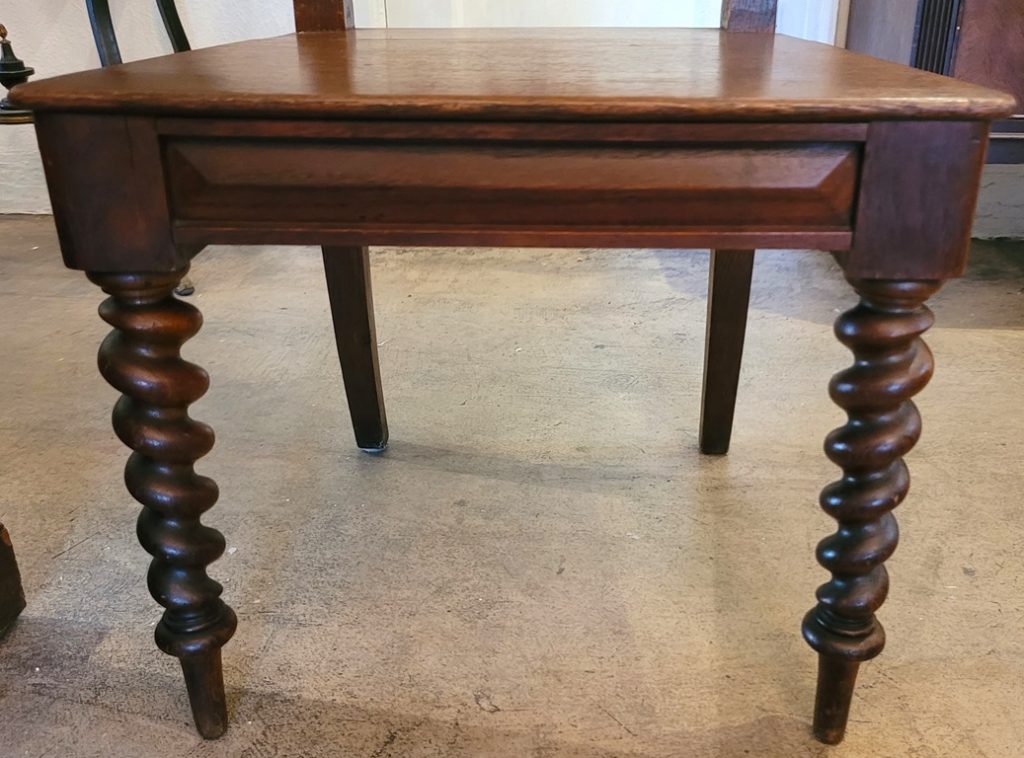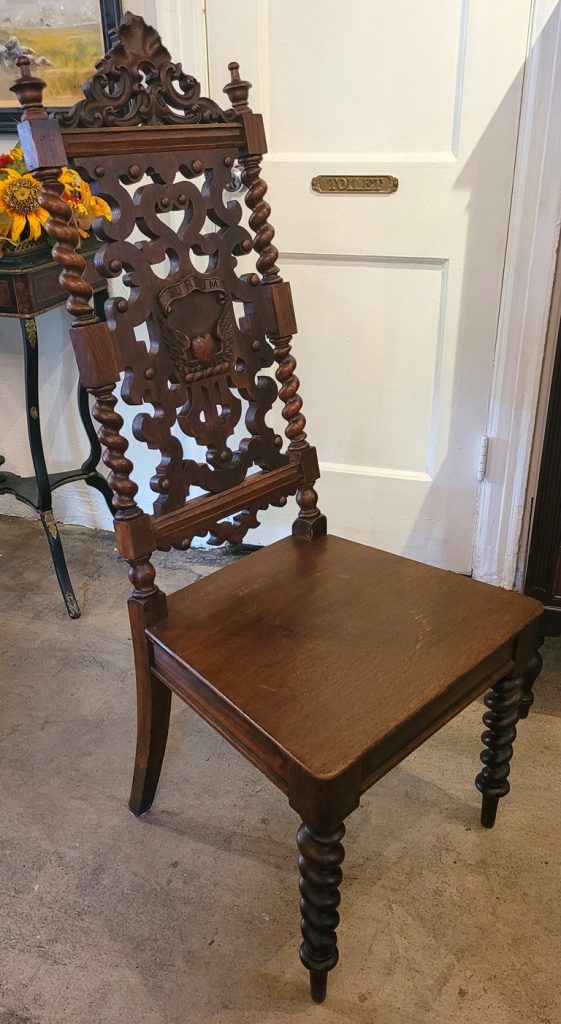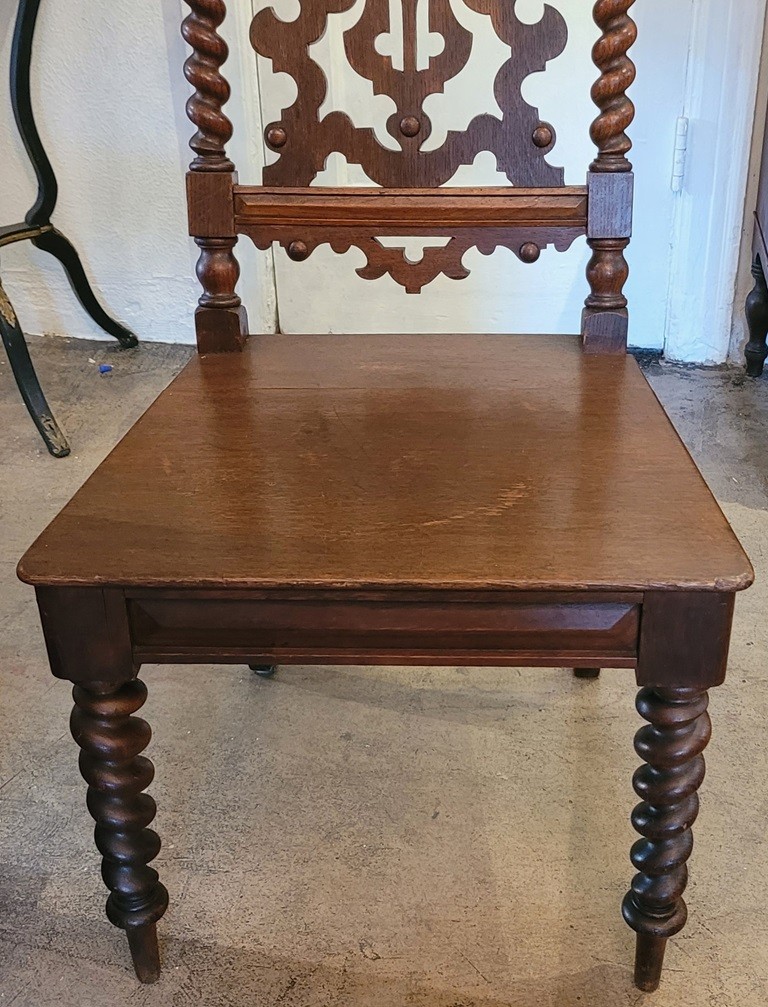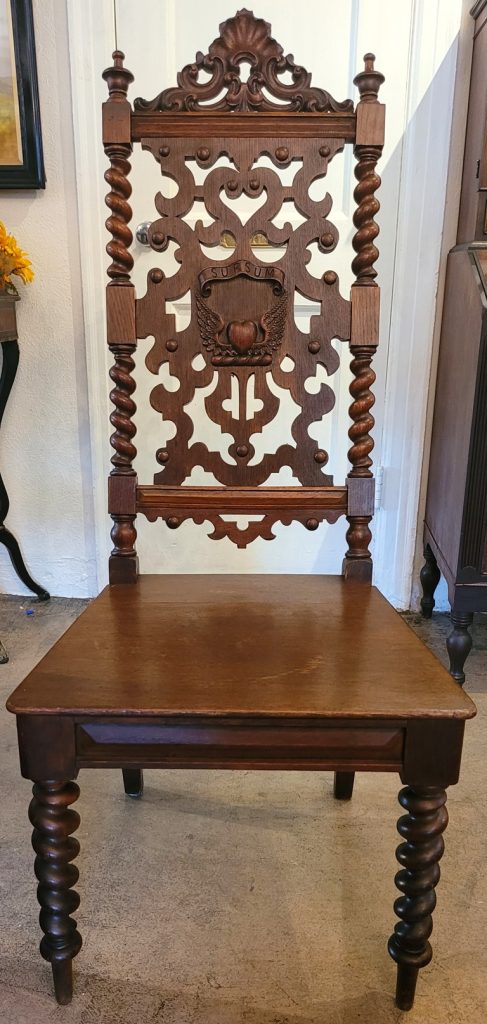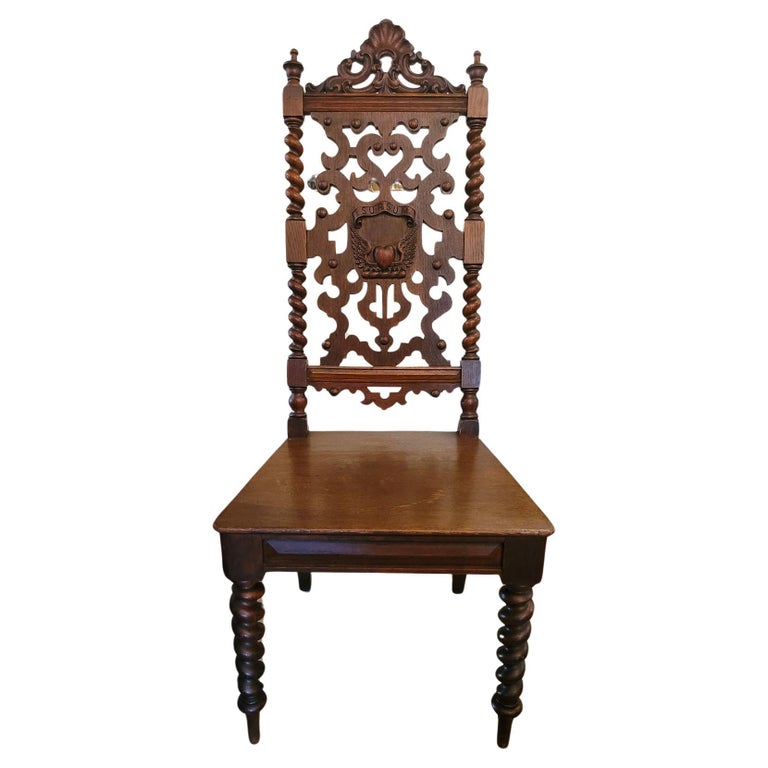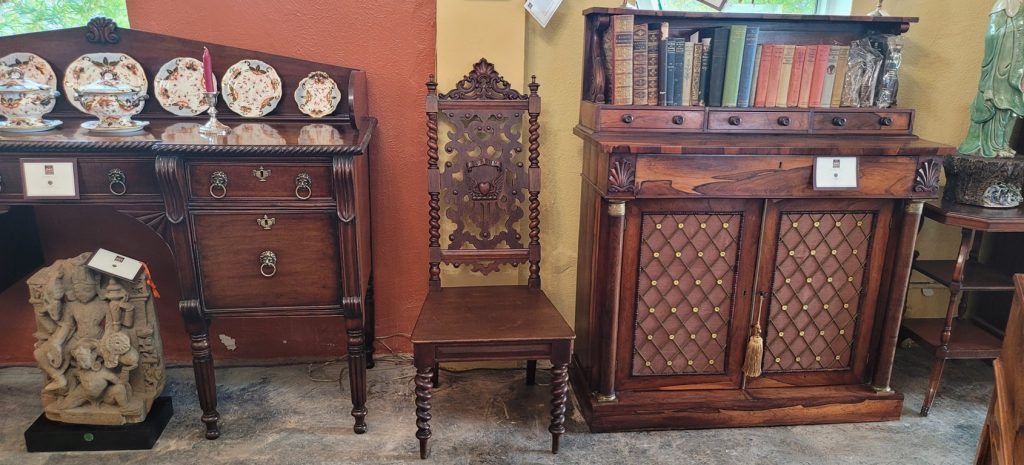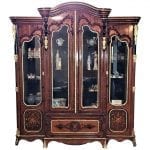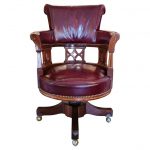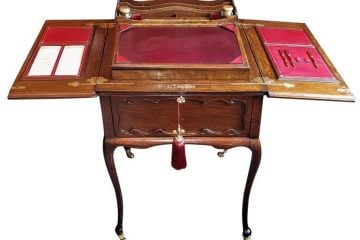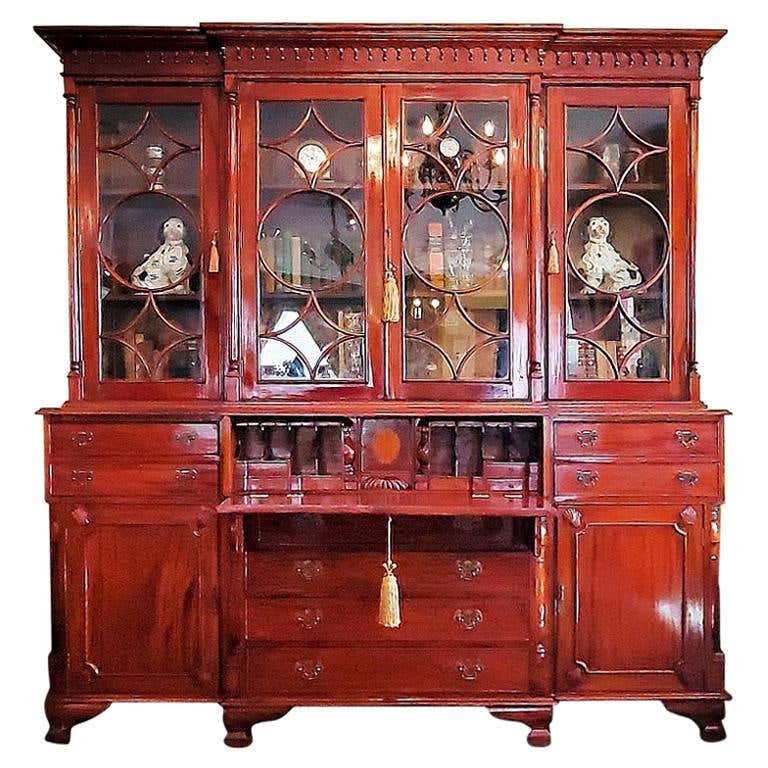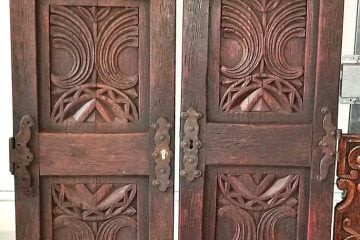19C English Rococo Revival Ecclesiastical Oak Hall Chair
PRESENTING a FABULOUS 19C English Rococo Revival Ecclesiastical Oak Hall Chair.
Made in England (Britain) circa 1870 in the Rococo Revival Style from solid oak.
The large carved acanthus rosette on the crown/pelmet is in the classic rococo style.
The crown is flanked by a pair of pointed and turned finials that top the side pillars. The pillars consist of carved and turned barley twist columns.
The central backing of the chair consists of a large carved and pierced scrolling section, with button decorations and a central armorial style crest featuring a central carved ‘heart’, flanked by attached feathered ‘wings’ and a carved scroll/motto above, with the words “SURSUM” carved into the scroll.
The rear legs are straight but curve outwards.
The seat is almost square in shape, but gets wider towards the front.
Plain horizontal supports on the back and sides below the seat but paneled on the front.
The front 2 legs are, again, barley twist with turned and pointed feet.
Plain on the back, which clearly tells us that this was made as a ‘Hall Chair”.
“SURSUM” is Latin for ‘UPWARDS’ and coupled with the winged heart, the message for this chair is clear …. “Raise Your Heart Upwards”.
It clearly has an ‘ecclesiastical’ or religious influence and was probably custom made for a religious cleric.
ONE OF A KIND PIECE!
During the Regency era, the Prince Regent (who later became King George IV) patronized makers of high-quality works of rococo silver. The Prince Regent favored neoclassical elements of more luxurious interpretations of the late Louis XV and Louis XVI periods. The tastes of the Prince Regent helped fuel interest in the rococo revival spirit in England.
Paul Storr was recognized as one of the most important and well-renowned English silversmiths. His quality of workmanship and versatility enabled him to create works that suited a wide range of tastes and preferences. Many rococo themes and motifs can be found in his works. An example of his work is a salver featuring signs of the Zodiac, a border cast chased with rococo scrolls, rococo decoration of the surface, and feet in rococo-cartouche form. One of the most monumental works created in rococo expression was Storr’s large candelabrum, created during the reign of William IV. The piece featured flowing branches and rolling, curved surfaces.
During the late 1820s, the aristocracy commissioned anti-classical styles, producing a much different expression of rococo in England. Manufacturers in Birmingham and Sheffield became mass-producers of Sheffield plate, a layered combination of silver and copper. Mass-production also enabled silver embossed with scrolls, flowers, and foliage, which were produced cheaply by steam-presses on thin silver. These wares were made to imply luxury, not previously available on thin-sheeted silver, while mass-production allowed for mass-distribution and export. Historically reserved for royalty and aristocrats, industrialization and technological advances in machinery made rococo silver accessible to a broader audience.
Link: https://en.wikipedia.org/wiki/Rococo_Revival
19C English Rococo Revival Ecclesiastical Oak Hall Chair
Provenance: From the Private Collection of an Episcopalian Bishop, originally from Canada, with deep roots in Scotland.
Condition: Very good original condition. One crack on seat, but not noticeable and in no way affects the chair’s stability. Some ‘rubbing’ on the seat.
Dimensions: 44 inches tall, 18.5 inches wide at front, 20 inches deep, 15.75 inches seat height. 16 inch seat depth.
SALE PRICE NOW: $2,400
